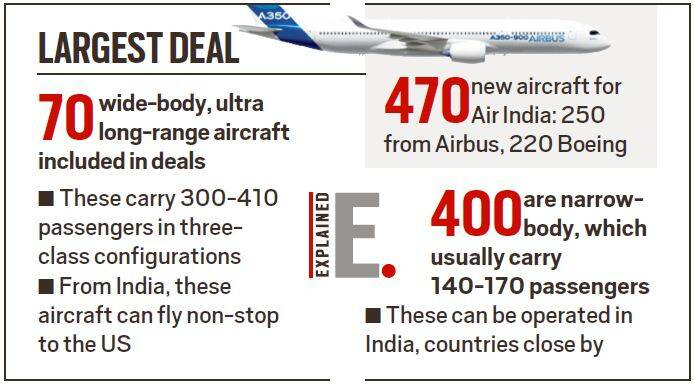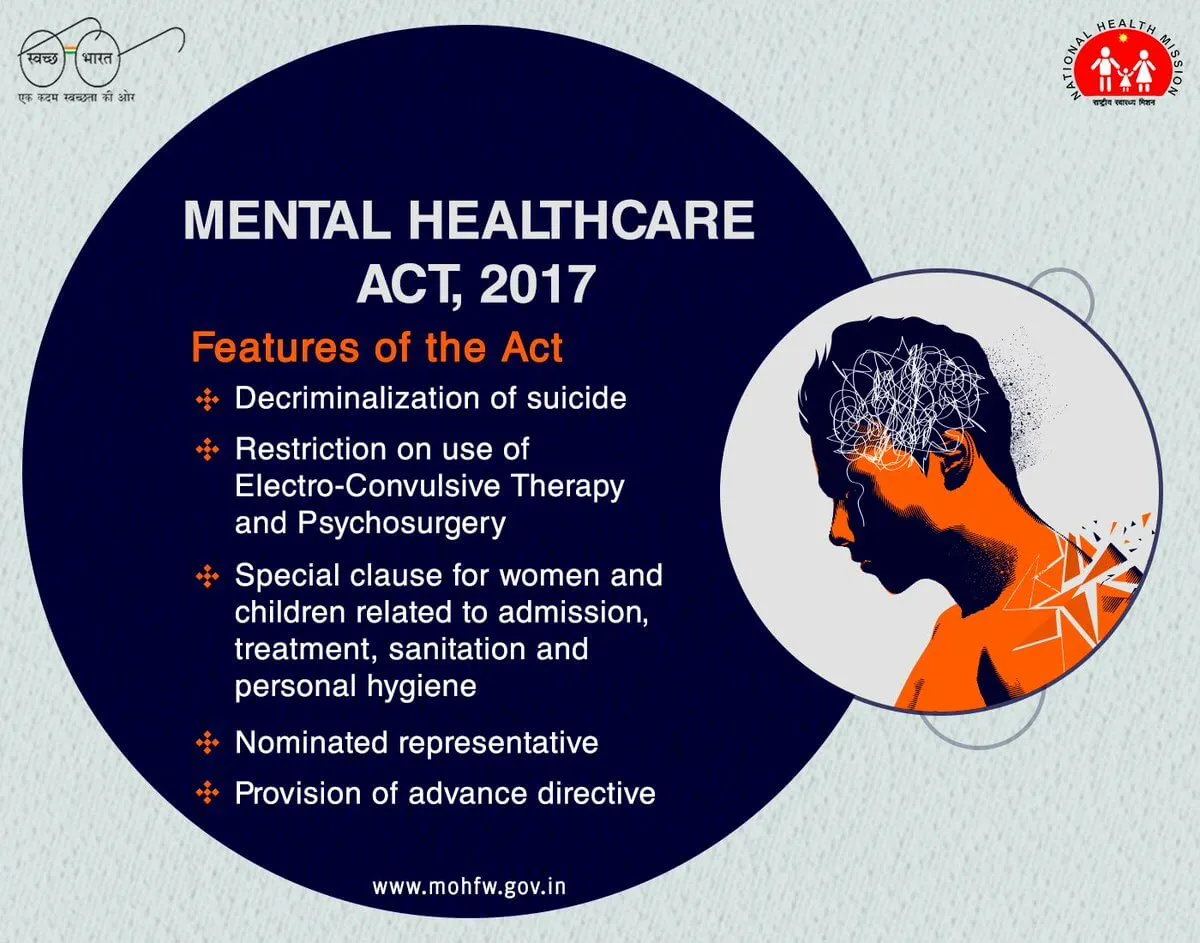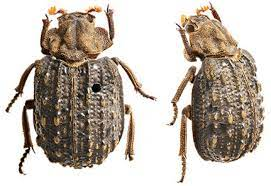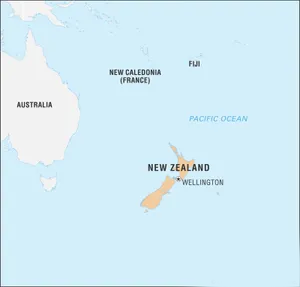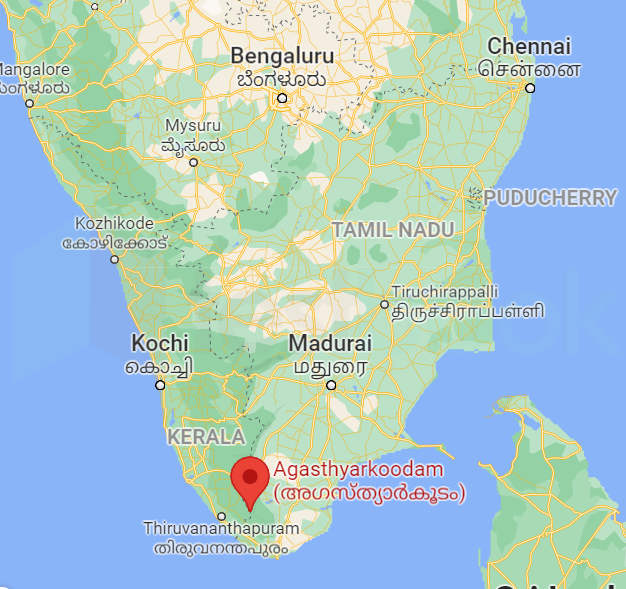Infographics
Governance
Draft Geo-heritage Sites and Geo-relics Bill, 2022
Prelims: GSI, UNESCO, Right to Fair Compensation, RFCTLARR Act.
Mains: Draft Geo-heritage Sites and Geo-relics Bill.
Why in News?
Recently, the Ministry of Mines has notified Draft Geo-heritage Sites and Geo-relics (Preservation and Maintenance) Bill, 2022.
- The Bill is aimed at providing for the declaration, preservation, protection and maintenance of geo-heritage sites and geo-relics of national importance, for geological studies, education, research and awareness purposes.
- The GSI has declared 32 geo-heritage sites, including the Siwalik Fossil Park, Himachal Pradesh; Stromatolite Fossil Park, Jharmarkotra Rock Phosphate deposit, Udaipur district, Akal Fossil Wood Park, Jaisalmer, but several are in stages of disrepair.
What are the Key Features of the Bill?
- Defines Geoheritage Sites:
- Geoheritage sites are “sites containing geo-relics and phenomena, stratigraphic type sections, geological structures and geomorphic landforms including caves, natural rock-sculptures of national and international interest; and includes such portion of land adjoining the site,” that may be required for their conservation or to access to such sites.
- Georelics:
- A Geo-relic is defined as “any relic or material of a geological significance or interest like sediments, rocks, minerals, meteorite or fossils”.
- The GSI (geological Survey of India) will have the power to acquire geo-relics “for its preservation and maintenance”.
- A Geo-relic is defined as “any relic or material of a geological significance or interest like sediments, rocks, minerals, meteorite or fossils”.
- Authority to Central Government:
- It would authorize the Central Government to declare a geoheritage site to be of national importance.
- This would be under the provisions of the Right to Fair Compensation and Transparency in Land Acquisition, Rehabilitation and Resettlement Act, 2013 (RFCTLARR Act).
- Compensation to the Occupier of Land:
- Provision is made for compensation to the owner or occupier of land who incurs loss or damage from the land due to the exercise of any power under this Act.
- The market value of any property will be ascertained in accordance with the principles set out in the RFCTLARR Act.
- Prohibition on Construction:
- The Bill imposes a prohibition on construction, reconstruction, repair or renovation of any building within the geoheritage site area or utilization of such area in any other manner, except for construction for preservation and maintenance of geoheritage site or any public work essential to the public.
- Penalty:
- Penalties for destruction, removal, defacement or contravention of any direction issued by the Director General, GSI in the geo-heritage site are mentioned.
- There is a penalty of imprisonment which may extend to six months or fine which may extend to Rs.5 lakh, or both. In the case of a continuing contravention, an additional fine of upto Rs.50,000 for every day of continuing contravention may be imposed.
What are the Concerns?
- There are concerns over the distribution of power as mentioned in the Bill.
- It points to how the GSI has the authority to acquire any material of geological significance, including sediments, rocks, minerals, meteorites, and fossils, as well as sites of geological importance.
- The issue of land acquisition for the purpose of safeguarding these sites could also lead to issues with local communities.
What is the Geological Survey of India?
- It was set up in 1851 primarily to find coal deposits for the Railways.
- Over the years, it has not only grown into a repository of geo-science information required in various fields in the country but has also attained the status of a geo-scientific organisation of international repute.
- The main functions of the GSI relate to creation and update of national geo-scientific information and mineral resource assessment.
- It is headquartered in Kolkata and has six regional offices located at Lucknow, Jaipur, Nagpur, Hyderabad, Shillong and Kolkata. Every state has a state unit.
- Presently, GSI is an attached office to the Ministry of Mines.
Way Forward
- Other than protecting places of geological interest, the need for a law that specifically protects sites of geo-heritage value follows from India being a signatory to the UNESCO Convention concerning the Protection of the World Cultural and Natural Heritage, since 1972.

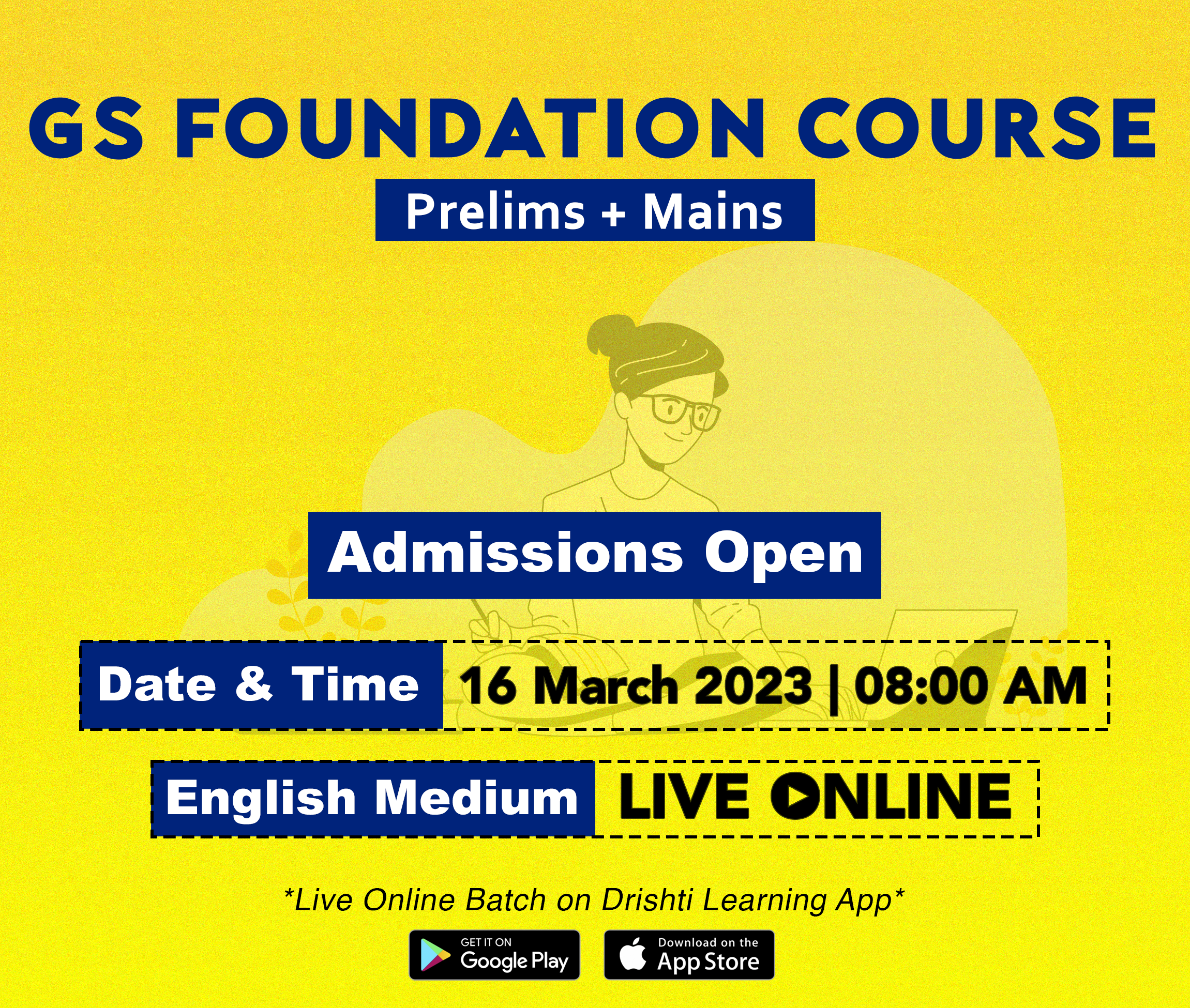
Governance
Plan to Set up 2 lakh PACS, Dairy, and Fisheries Cooperatives
Prelims: Digitization of PACS, PMMSY, Atmanirbhar Bharat, Cooperatives.
Mains: Significance of PACS and the Issues, Government Policies & Interventions.
Why in News?
The Centre approved a plan for setting up 2 lakh Primary Agricultural Credit Societies (PACS), dairy, and fisheries cooperatives in the country in the next five years to strengthen the cooperative movement.
- Earlier, the Union Budget 2023 announced Rs 2,516 crore for computerisation of 63,000 PACS over the next five years, with the aim of bringing greater transparency and accountability.
What are the Key Points of the Plan?
- Aim: The plan, mooted by the Ministry of Cooperation, is aimed at “strengthening cooperative movement in the country and deepening its reach up to the grassroots”.
- Convergence of Various Schemes: Plan is to establish viable PACS, dairy and fishery cooperatives in villages, and strengthen the existing ones through convergence of various schemes of the Ministry of Fisheries, Animal Husbandry & Dairying by leveraging the ‘whole-of-government’ approach.
- Action Plan: Action plan for implementation of the project shall be prepared by NABARD, National Dairy Development Board (NDDB) and National Fishery Development Board (NFDB).
- Components:
- Department of Animal Husbandry and Dairying:
- National Programme for Dairy Development (NPDD)
- Dairy Processing & Infrastructure Development Fund (DIDF)
- Department of Fisheries:
- Department of Animal Husbandry and Dairying:
- High Level Inter-Ministerial Committee (IMC): It is to be established under Ministry of Cooperation for smooth implementation of the plan.
What is the Significance of the Plan?
- There are still 1.6 lakh panchayats without PACS and nearly 2 lakh panchayats without any dairy cooperative society.
- PACS account for 41% (3.01 crore farmers) of the Kisan Credit Card (KCC) loans given by all entities in the country.
- NABARD’s annual report of 2021-22 shows that 59.6 per cent of the total loans were extended to the small and marginal farmers.
- These societies also provide warehousing services to farmers in order to preserve and store their food grains.
What is PACS?
- PACS are the ground-level cooperative credit institutions that provide short-term, and medium-term agricultural loans to the farmers for the various agricultural and farming activities.
- These are the last link in a three-tier cooperative credit structure headed by the State Cooperative Banks (SCB) at the state level. Credit from the SCBs is transferred to the District Central Cooperative Banks (DCCBs), which work with PACS.
- The PACS functioning at the base of the co-operative banking system constitute the major retail outlets of short term and medium-term credit to the rural sector.
Way Forward
- Along with improved coverage, reorganisation and increased resource-mobilization capacity of PACS is necessary to increase their ability to attract more deposits and loans from higher financing agencies.
- PACS should receive coherent policy support over long period and be highlighted in the Government of India's vision for Atmanirbhar Bharat and Vocal for Local initiatives to realize their potential as building blocks for a self-sufficient village economy.
UPSC Civil Services Examination Previous Year Questions (PYQs)
Prelims
Q.1 Consider the following statements: (2020)
- In terms of short-term credit delivery to the agriculture sector, District Central Cooperative Banks (DCCBs) deliver more credit in comparison to Scheduled Commercial Banks and Regional Rural Banks.
- One of the most important functions of DCCBs is to provide funds to the Primary Agricultural Credit Societies.
Which of the statements given above is/are correct?
(a) 1 only
(b) 2 only
(c) Both 1 and 2
(d) Neither 1 nor 2
Ans: (b)
Q.2 With reference to ‘Urban Cooperative Banks’ in India, consider the following statements: (2021)
- They are supervised and regulated by local boards set up by the State Governments.
- They can issue equity shares and preference shares.
- They were brought under the purview of the Banking Regulation Act, 1949 through an Amendment in 1966.
Which of the statements given above is/are correct?
(a) 1 only
(b) 2 and 3 only
(c) 1 and 3 only
(d) 1, 2 and 3
Ans: (b)
- Co-operative banks are financial entities which belong to its members, who are at the same time the owners and the customers of their bank. They are established by State laws.
- Co-operative banks in India are registered under the Cooperative Societies Act. They are also regulated by the RBI and governed by Banking Regulations Act, 1949 and Banking Laws (Co-operative Societies) Act,1955.
- Cooperative banks lend as well as accept deposits. They are established with the aim of funding agriculture and allied activities and financing village and cottage industries.
- National Bank for Agriculture and Rural Development (NABARD) is the apex body of cooperative banks in India.
- Urban Co-operative Banks (UCB) are regulated and supervised by State Registrars of Co-operative Societies (RCS) in case of single-state co-operative banks and Central Registrar of Co-operative Societies (CRCS) in case of multi-state co-operative banks and by the RBI. Hence, statement 1 is not correct.
- The banking related functions such as issue of license to start new banks/branches, matters relating to interest rates, loan policies, investments and prudential exposure norms are regulated and supervised by the Reserve Bank under the provisions of the Banking Regulation Act, 1949 after an amendment in 1966. Hence, statement 3 is correct.
- The Reserve Bank of India came out with draft guidelines allowing primary UCBs to augment capital through issuance of equity shares, preference shares and debt instruments.
- The UCBs could raise share capital by issue of equity to persons within their area of operation enrolled as members and also through additional equity shares to the existing members. Hence, statement 2 is correct.
- Therefore, option (b) is the correct answer.
Mains
Q.“In the villages itself no form of credit organization will be suitable except the cooperative society.” – All India Rural Credit Survey. Discuss this statement in the background of agricultural fi nance in India. What constraints and challenges do financial institutions supplying agricultural fi nance face? How can technology be used to better reach and serve rural clients? (2014)

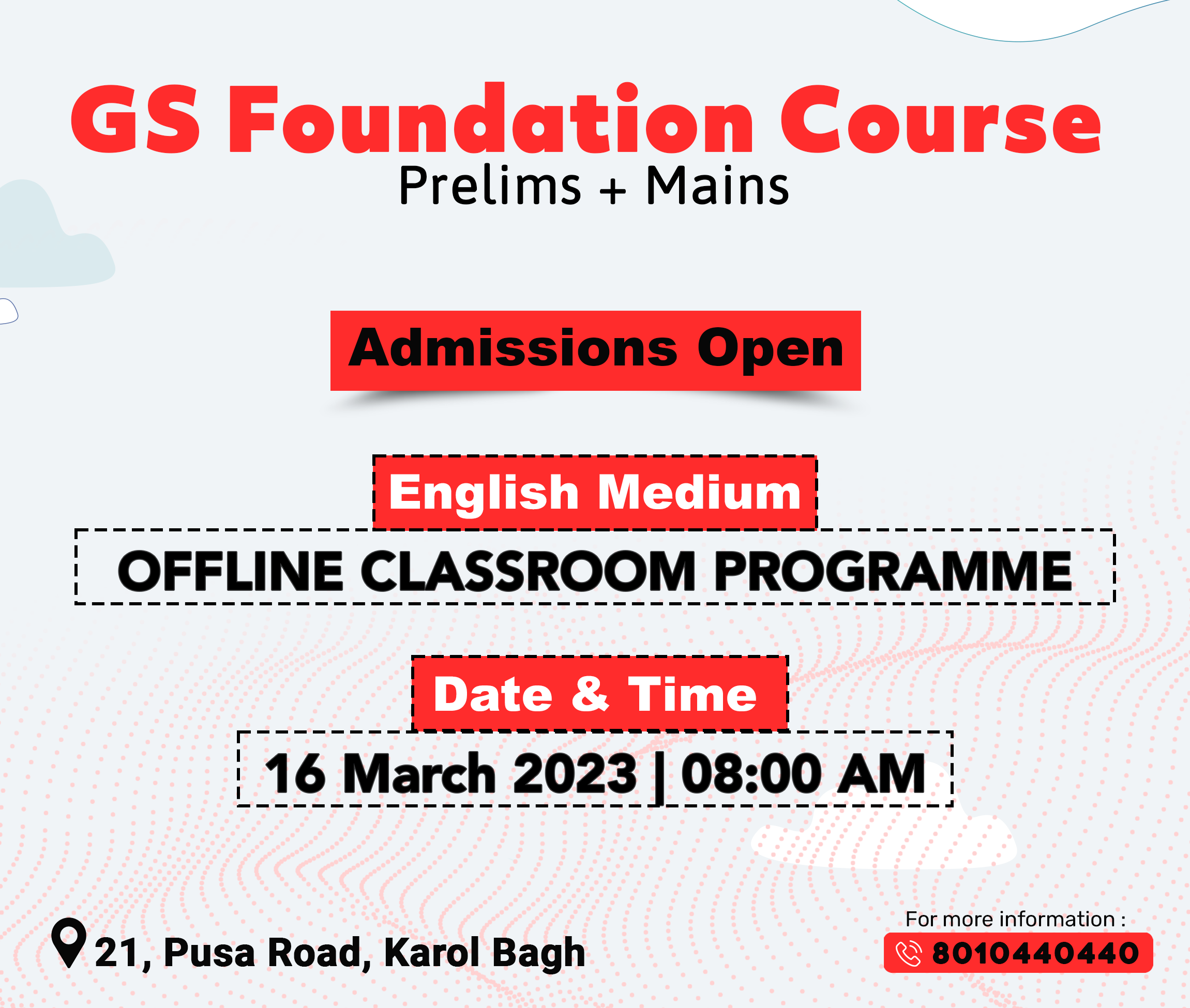
Indian Economy
470 Airbus, Boeing Planes for Air India
For Prelims: National Civil Aviation Policy 2016, UDAN, UDAN 2.0, Airport Authority of India.
For Mains: Status of India's Aviation Sector, Recent Government Initiatives Related to Aviation Sector.
Why in News?
Air India has announced two major deals worth around USD 100 billion to buy 470 passenger planes from top aircraft manufacturers Airbus (with France) and Boeing (with United States).
What is the Significance of this Aircraft Deal for India?
- The deal reflects India’s aspirations to be a world leader in the aviation sector, which is projected to require over 2,000 aircraft in the next 15 years.
- This is the first aircraft order Air India has placed in 17 years and the first A350 aircraft will be delivered to Air India by the end of 2023.
- The deal is expected to make India the third-largest player in the aviation sector and create new opportunities in aerospace manufacturing under India’s ‘Make in India-Make for the World’ vision.
What is the Status of India's Aviation Sector?
- About:
- India's Civil Aviation is among the fastest-growing aviation markets globally and will be a major growth engine to make India a USD 5 trillion economy by 2024.
- The nation's aeroplane fleet is projected to quadruple in size to approximately 2500 aeroplanes by 2038.
- Recent Government Initiatives Related to Aviation Sector:
- National Civil Aviation Policy (NCAP) 2016:
- Through the NCAP 2016 the government plans to take flying to the masses by enhancing affordability and connectivity.
- It promotes ease of doing business, deregulation, simplified procedures, and e-governance.
- The Regional Connectivity Scheme or UDAN (‘Ude Desh ka Aam Nagrik’) is a vital component of NCAP 2016.
- Through the NCAP 2016 the government plans to take flying to the masses by enhancing affordability and connectivity.
- UDAN 2.0:
- The Scheme lays out the vision of improving value realisation through better integration and optimization of Agri-harvesting and air transportation and contributing to Agri-value chain sustainability, resilience under different and dynamic conditions.
- Monetising Assets through PPP Mode:
- The Centre has earmarked a total of 25 airports for asset monetisation over the years 2022 to 2025 under the National Monetization Pipeline.
- National Civil Aviation Policy (NCAP) 2016:
- Challenges:
- High Operating Costs: One of the major challenges for the Indian aviation sector is the high operating costs. This is due to a number of factors such as high fuel prices, airport charges, and taxes.
- Infrastructure Constraints: The Indian aviation sector also faces infrastructure constraints such as limited airport capacity, lack of modernised air traffic control systems, and inadequate ground handling facilities.
- Regulatory Framework: The Indian aviation sector also faces challenges related to the regulatory framework.
- The sector is heavily regulated, and airlines have to comply with a number of rules and regulations through different windows, which can be complex and time-consuming.
Way Forward
- Leveraging Technology: The Indian aviation sector can benefit from the use of modern technology to enhance efficiency and passenger experience.
- This includes the use of artificial intelligence, robotics, and big data analytics to improve operations, reduce costs, and enhance safety.
- Encouraging Sustainable Practices: The Indian aviation sector needs to adopt sustainable practices, including the use of alternative fuels and reducing carbon emissions, to mitigate the impact of aviation on the environment.
- Encouraging Regional Connectivity: The Indian government needs to encourage the development of regional airports to enhance connectivity to remote areas of the country.
- This would require developing a regional air transport network and incentivizing airlines to operate in these areas
UPSC Civil Services Examination, Previous Year Questions (PYQs)
Q. Examine the development of Airports in India through joint ventures under Public–Private Partnership (PPP) model. What are the challenges faced by the authorities in this regard? (2017)
Q. International civil aviation laws provide all countries complete and exclusive sovereignty over the airspace above their territory. What do you understand by ‘airspace’? What are the implications of these laws on the space above this airspace? Discuss the challenges which this poses and suggest ways to contain the threat. (2014)

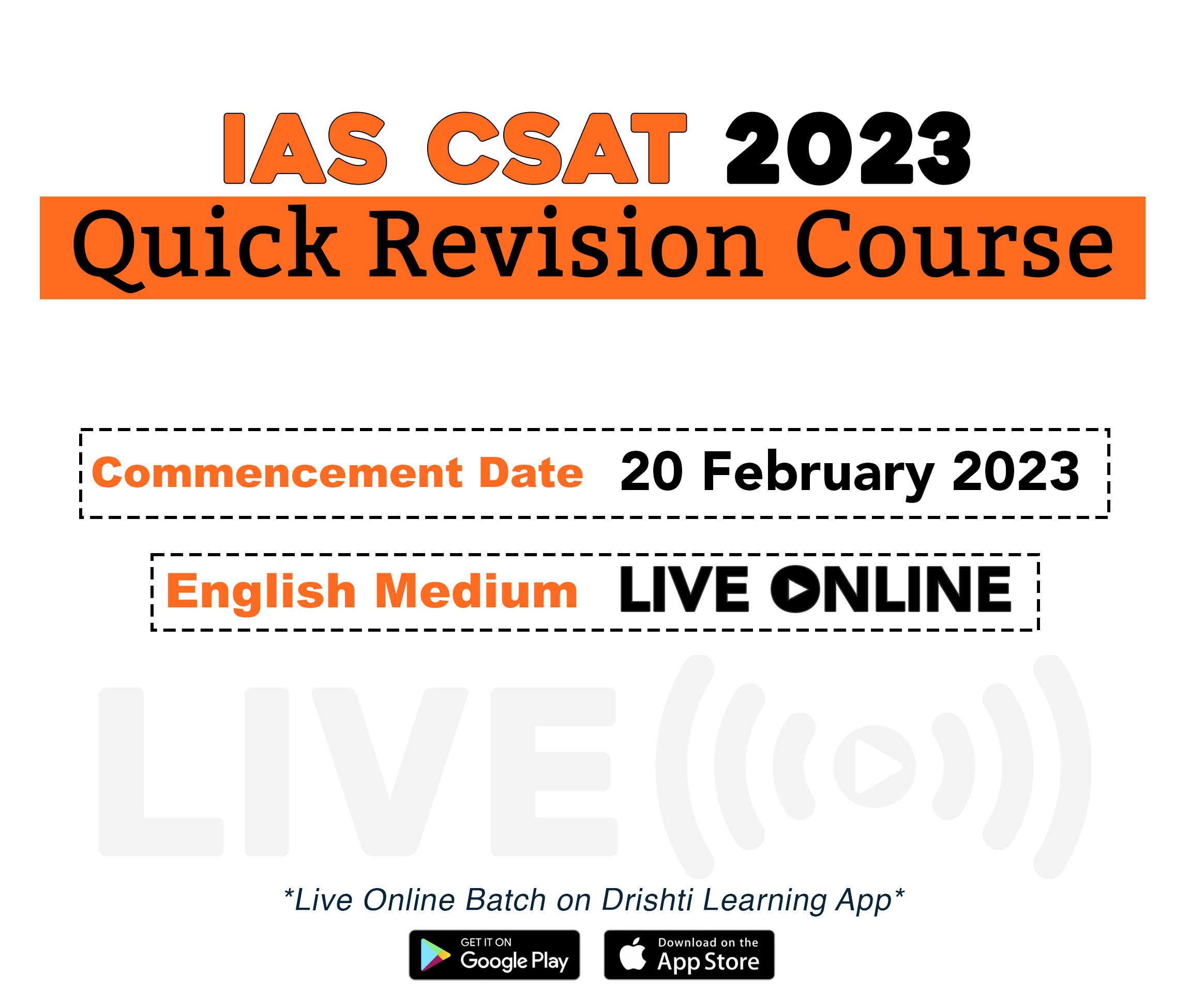
Social Issues
Mental Healthcare Act, 2017
Prelims: NHRC, MHIs, Section 19, SDG 3.4, WHO’s Comprehensive Mental Action Plan 2013-2020, MANAS App.
Mains: Mental Healthcare Act, 2017, and Associated Challenges.
Why in News?
The National Human Rights Commission (NHRC) gas raised concern over the Deplorable Condition of many Mental Healthcare Institutions (MHIs) in India, violating Mental Healthcare Act (MHA), 2017.
- According to the NHRC, MHIs are “illegally” keeping patients long after their recovery, which not only violates Article 21 but also highlights failure of the Governments to discharge the obligation under various international Covenants relating to rights of persons with disabilities which have been ratified by India.
What is the Background MHA, 2017?
- Before MHA 2017, the Mental Healthcare Act, 1987 existed, which prioritized the institutionalization of mentally ill people and did not afford any rights to the patient.
- The Act provided disproportionate authority to judicial officers and mental health establishments to authorize long-stay admissions, often against the informed consent and wishes of the individual.
- Consequently, several persons continue to be admitted and languish in mental health establishments against their will.
- It embodied the ethos of the colonial-era Indian Lunacy Act of 1912, which linked criminality and madness.
- Asylums were places where “abnormal” and “unproductive” behaviour was studied as an individual phenomenon, isolating the individual from society. The intervention is meant to correct an inherent deficit or “abnormality”, thereby leading to “recovery”.
- In 2017, the MHA dismantled the clinical heritage attached to asylums.
What is MHA 2017?
- About:
- This Act defined mental illness as “a substantial disorder of thinking, mood, perception, orientation, or memory that grossly impairs judgment, behaviour, capacity to recognize reality or ability to meet the ordinary demands of life, mental conditions associated with the abuse of alcohol and drugs.
- It also provides the right of patients to access facilities that include rehabilitation services in the hospital, community, and home, sheltered and supported accommodation.
- It regulates the research on PMI (Person with Mental Illness) and the use of neurosurgical treatments.
- Rights under MHA:
- Right to Make an Advance Directive (Patient can state on how to be treated or not to be treated for the illness during a mental health situation).
- Right to Access to Healthcare Services.
- Right to free of cost healthcare services.
- Right to live in a community.
- Right to protection from cruel, inhuman and degrading treatment.
- Right not to be treated under prohibited treatment.
- Right to equality and non-discrimination.
- Right to information.
- Right to confidentiality.
- Right to legal aid and complain.
- Attempt to Commit Suicide not an Offence:
- A person who attempts to commit suicide will be presumed to be “suffering from severe stress’’ and shall not be subjected to any investigation or prosecution.
- The act envisages the establishment of Central Mental Health Authority and State Mental Health Authority.
What are the Associated Challenges with the Implementation?
- Absence of MHRBs:
- The majority of the States have not established State Mental Health Authority and Mental Health Review Boards (MHRBs), and many States have not notified minimum standards which are meant to ensure the quality of MHIs.
- MMHRBs are bodies that can draft standards for mental healthcare institutes, oversee their functioning and ensure they comply with the Act.
- The absence of MHRBs renders people unable to exercise rights or seek redressal in case of rights violations.
- The majority of the States have not established State Mental Health Authority and Mental Health Review Boards (MHRBs), and many States have not notified minimum standards which are meant to ensure the quality of MHIs.
- Poor Budgetary Allocation:
- Poor budgetary allocation and utilization of funds further create a scenario where shelter homes remain underequipped, establishments are understaffed, and professionals and service providers are not adequately trained to deliver mental healthcare.
- Stigma:
- People are either put in these establishments by families or through the police and judiciary.
- In many cases,families refuse to take them because of the stigma attached to incarceration or the idea that the person is no longer functional in society.
- Gender discrimination plays a role here: women are more likely to be abandoned due to “family disruption, marital discords and violence in intimate relationships.
- Lack of Community Based Services:
- While Section 19 recognises the right of people to “live in, be part of, and not be segregated from society,” there have been no concrete efforts towards implementation.
- The dearth of alternative community-based services -in the form of homes for assisted or independent living, community-based mental healthcare services, and socio-economic opportunities – further complicates access to rehabilitation.
What are the Initiatives Related to Mental Health?
- Global Initiatives:
- Indian Initiatives:
Way Forward
- The Act must be reviewed regularly to ensure that it remains effective in addressing the changing needs of individuals with mental health issues.
- Additionally, resources must be made available to ensure that the Act is adequately implemented and enforced.
- There must be ongoing efforts to reduce the stigma associated with mental illness, to increase public awareness of mental health issues, and to promote mental health and well-being.

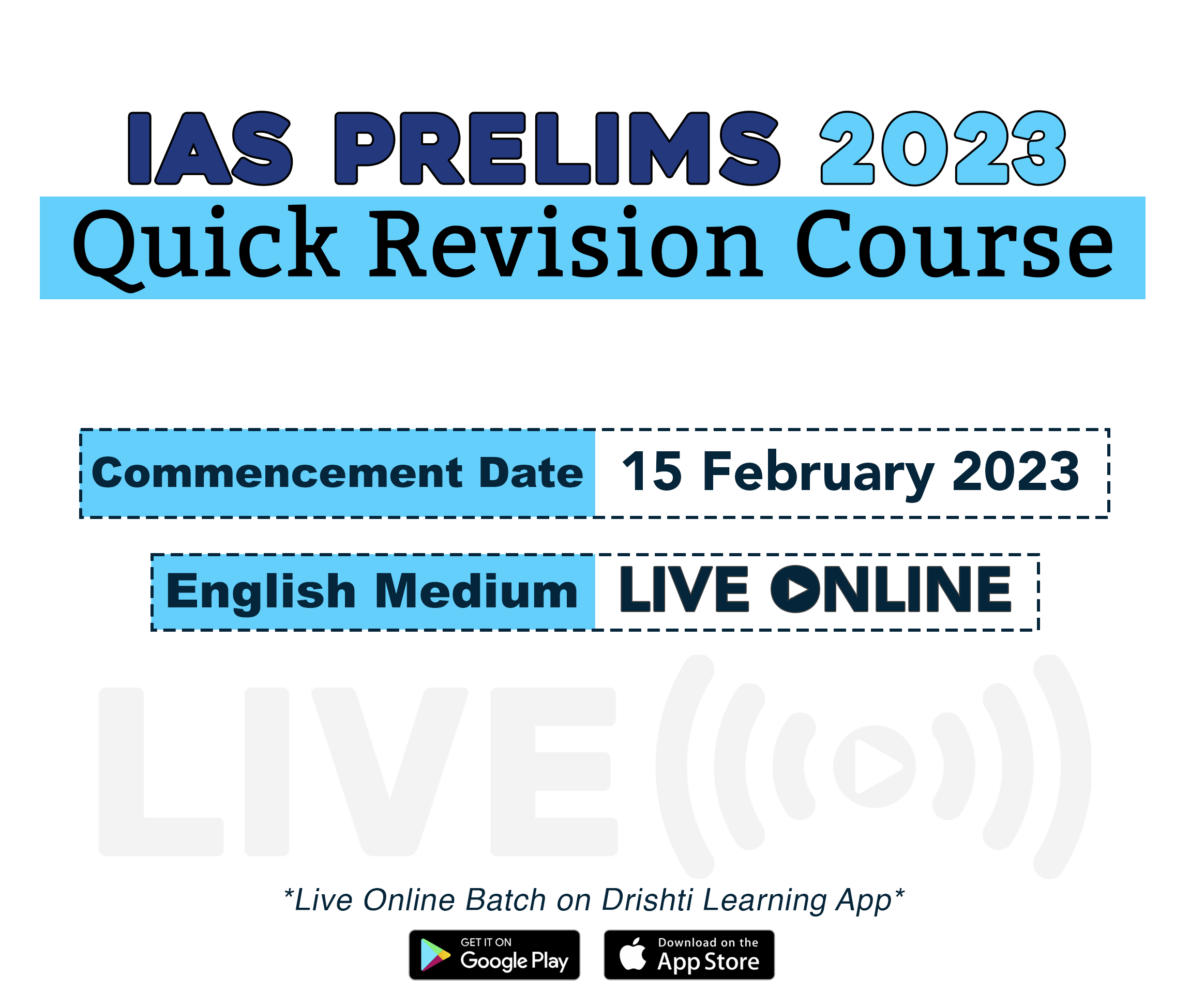
Biodiversity & Environment
Limiting Warming Below 1.8°C
For Prelims: UN-mandated Paris Agreement, Sea level rise, Greenland ice sheets, Net-zero carbon emissions, Greenhouse gases, Marine heatwave, UPSC, IAS, Civil Services Examination.
For Mains: Issues Related to Climate Change, Initiatives for Climate Change Mitigation.
Why in News?
According to a recent study published in Nature Communications, limiting global temperature rise to the UN-mandated Paris Agreement target of 2 degrees Celsius is probably insufficient to prevent an accelerated sea level rise over the next century.
What Does the Recent Study on Rising Temperature Suggest?
- The study suggests that if global temperatures rise above 1.8°C, the world could see an irreversible loss of the west Antarctic and Greenland ice sheets, leading to a rapid sea level rise.
- Scientists studying Antarctica’s vast Thwaites Glacier (Doomsday Glacier) say warm water is seeping into its weak spots, worsening melting caused by rising temperatures.
- Using an underwater robot vehicle known as Icefin, mooring data and sensors, they monitored the glacier’s grounding line, where ice slides off the glacier and meets the ocean for the first time.
- The study highlights that reaching net-zero carbon emissions before 2060 is critical to avoid this catastrophe.
- By 2150, global sea level rise is estimated to increase by roughly 1.4, 0.5, and 0.2 metres under high, mid, and low-emission scenarios, respectively.
What are the Major Catastrophic Events Caused by Climate Change?
- About:
- As the Earth's temperature increases, ice caps and glaciers are melting at an accelerated rate. The melting of land-based ice, such as glaciers and ice caps, contributes to sea level rise as the water from melting ice flows into the ocean.
- The rise in temperature is primarily due to the increase in in greenhouse gases the atmosphere, primarily carbon dioxide, resulting from human activities such as the burning of fossil fuels and deforestation.
- Major Event:
- Increase in Concentration of Greenhouse Gases:
- The concentrations of three main greenhouse gases, carbon dioxide (CO2), methane (CH4) and Nitrous oxide (NO2), were all at record highs in 2021.
- The emissions of methane, which is 25 times more potent than carbon dioxide in causing global warming, in fact, increased at the fastest pace ever.
- Temperature:
- The global average temperature in 2022 is estimated to be about 1.15 °C above the 1850-1900 average.
- La Niña (a cooling of sea-surface waters in the equatorial Pacific Ocean) conditions have dominated since late 2020.
- Sea Level Rise:
- Global mean sea level has risen by an estimated 3.4 ± 0.3 mm per year over the 30 years (1993-2022) of the satellite altimeter record.
- Ocean Heat:
- Overall, 55% of the ocean surface experienced at least one marine heatwave in 2022.
- Extreme Weather:
- In East Africa, rainfall has been below average in four consecutive wet seasons, the longest in 40 years, with indications that the current season could also be dry.
- The flooding came hard on the heels of an extreme heatwave in both India and Pakistan in 2022.
- In East Africa, rainfall has been below average in four consecutive wet seasons, the longest in 40 years, with indications that the current season could also be dry.
- Increase in Concentration of Greenhouse Gases:
What are the Steps taken to tackle Climate change?
- National:
- NAPCC:
- To counter the emerging threats from climate change, India released its National Action Plan to Combat Climate Change (NAPCC).
- It has 8 sub missions including National Solar Mission, National Water Mission etc.
- India Cooling Action Plan:
- It provides an integrated approach towards cooling and related areas including reduction in the cooling demand.
- This would help reduce emissions thereby combating global warming.
- It provides an integrated approach towards cooling and related areas including reduction in the cooling demand.
- NAPCC:
- Global:
- Paris Agreement:
- It seeks to keep the rise in global temperatures “well below” 2°C from pre-industrial times, while “pursuing efforts” to limit it to 1.5°C.
- UN SDGs:
- These are 17 broad goals for achieving sustainable development in the society. Amongst them Goal 13 exclusively focuses on tackling climate change.
- Glasgow Pact:
- It was finally adopted by 197 parties in 2021 during the COP26 negotiations.
- It has emphasised that stronger action in the current decade was most critical for achieving the 1.5-degree target.
- Sharm-El-Sheikh Adaptation Agenda (at COP 27):
- It outlines 30 Adaptation Outcomes to enhance resilience for 4 billion people living in the most climate vulnerable communities by 2030.
- Paris Agreement:
UPSC Civil Services Examination, Previous Year Question (PYQ)
Prelims
Q.1 Which of the following best describes/describe the aim of ‘Green India Mission’ of the Government of India? (2016)
- Incorporating environmental benefits and costs into the Union and State Budgets thereby implementing the ‘green accounting’.
- Launching the second green revolution to enhance agricultural output so as to ensure food security to one and all in the future.
- Restoring and enhancing forest cover and responding to climate change by a combination of adaptation and mitigation measures.
Select the correct answer using the code given below.
(a) 1 only
(b) 2 and 3 only
(c) 3 only
(d) 1, 2 and 3
Ans: (c)
Q2. With reference to ‘Global Climate Change Alliance’, which of the following statements is/are correct? (2017)
- It is an initiative of the European Union.
- It provides technical and financial support to targeted developing countries to integrate climate change into their development policies and budgets.
- It is coordinated by World Resources Institute (WRI) and World Business Council for Sustainable Development (WBCSD).
Select the correct answer using the code given below:
(a) 1 and 2 only
(b) 3 only
(c) 2 and 3 only
(d) 1, 2 and 3
Ans: (a)
Mains
Q.1 Describe the major outcomes of the 26th session of the Conference of the Parties (COP) to the United Nations Framework Convention on Climate Change (UNFCCC). What are the commitments made by India in this conference? (2021)
Q.2 ‘Climate Change’ is a global problem. How will India be affected by climate change? How Himalayan and coastal states of India be affected by climate change? (2017)

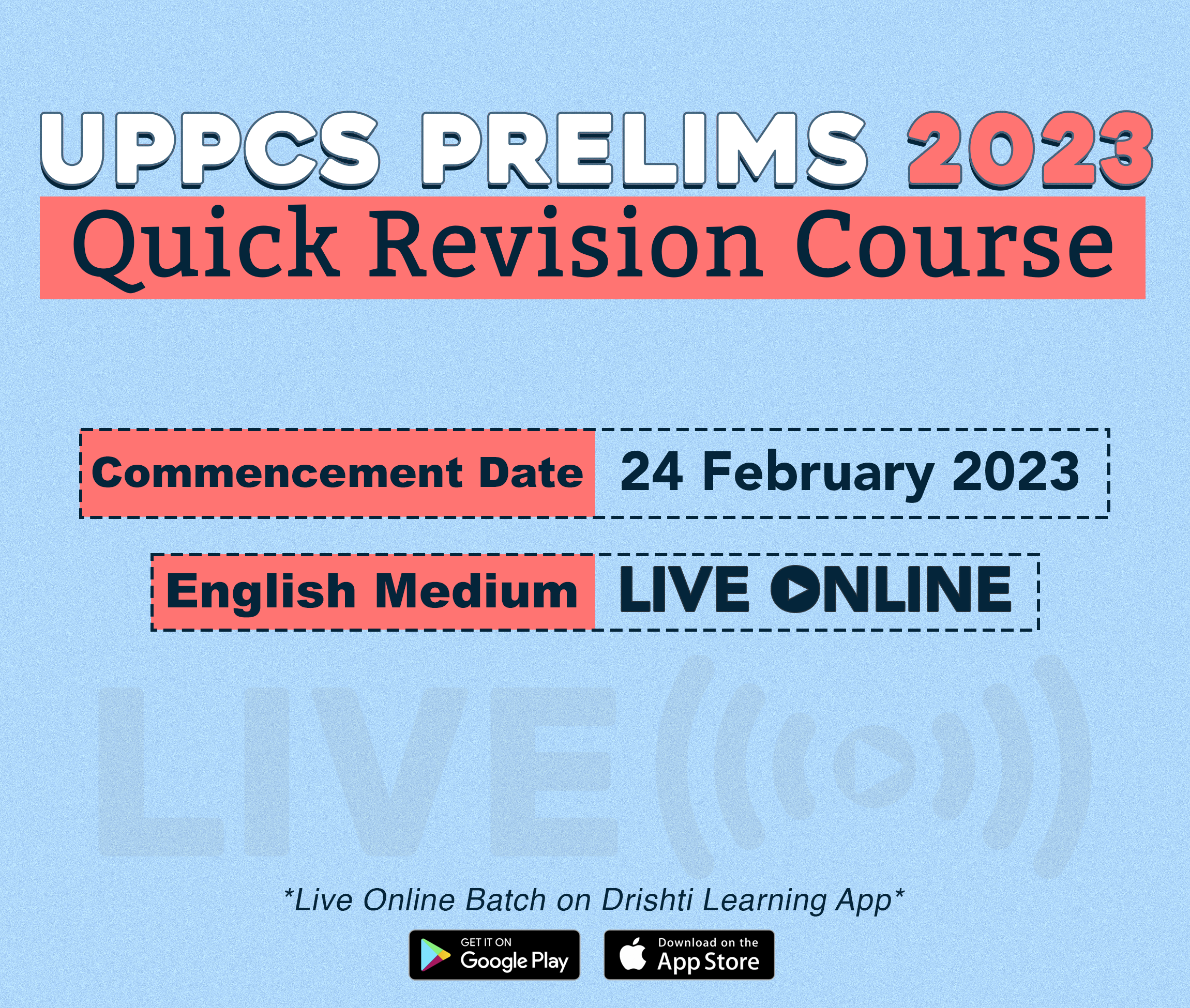
Important Facts For Prelims
DoT Updates Definition of Broadband
Why in News?
The Department of Telecommunications (DoT), on recommendation of Telecom Regulatory Authority of India (TRAI) has updated the definition of broadband for telecom operators, increasing the minimum speed requirement to 2Mbps from 512Kbps which had been in place since 2013.
- By the previous definition, there were 825.38 million broadband users in India in November 2022, according to TRAI data.
What is the New Definition?
- Broadband is a data connection that can support interactive services including Internet access and has the capability of the minimum download speed of 2 Mbps (Megabits per second) to an individual subscriber from the point of presence (POP) of the service provider intending to provide Broadband service,
- Wired broadband and wireless broadband will both be subject to this 2Mbps limit.
- Updation of definition was overdue as The National Telecom Policy 2012 which was replaced by The National Digital Communications Policy 2018, had set a goal of updating the definition of broadband to 2Mbps by 2015.
What is the Current Status of Broadband Speeds?
- According to Ookla’s Speed test Global Index (December 2022):
- Median Wired Broadband Speed in India is over 75Mbps.
- Median Wireless Broadband (mobile) Speed is over 36Mbps.
- Broadband speed is expected to further increase as 5G network expands.
What is the Industry’s Viewpoint?
- Industry resisted the definition update as 4G networks may not be able to sustain 2Mbps speed due to too many devices connected to single tower or user being far from nearest base location.
- The actual speed available to or experienced by the customer will vary depending upon several dynamic factors.
- With focus towards affordability and availability, the previous definition of 512 Kbps for broadband should have been continued.
UPSC Civil Services Examination Previous Year Questions (PYQs)
Prelims
Q.1 WiMAX is related to which one of the following? (2009)
(a) Biotechnology
(b) Space technology
(c) Missile technology
(d) Communication technology
Ans: (d)
- Worldwide Interoperability for Microwave Access (WiMAX) is a family of wireless broadband communication standards. It stands for “Worldwide Interoperability for Microwave Access”. It is a wireless communication technology based on Wireless Metropolitan Area Network (MAN) technology that is optimized for the delivery of IP centric services over a wide area.
- WiMAX is a standardized wireless version of ethernet, intended primarily as an alternative to wire technologies (such as cable modems, DSL and T1 or E1 links) to provide broadband access to customer premises.
- WiMAX would operate similar to WiFi, but at higher speeds over greater distances and for a greater number of users. WiMAX can provide service even in areas that are difficult for wired infrastructure to reach and can overcome the physical limitations of traditional wired infrastructure. Therefore, option (d) is the correct answer.


Important Facts For Prelims
Foreigners Cannot Be Legal Guardians: Delhi HC
Why in News?
The Delhi High Court has ruled that a foreigner cannot claim the right to be appointed as the legal guardian of a person with disabilities or the protection guaranteed under Part III of the Constitution, as available to Indian citizens.
What are Major Points Related to the Issue?
- The concerned foreigner challenged the validity of certain rules and regulations prescribed by the National Trust for Welfare of Persons with Autism, Cerebral Palsy, Mental Retardation and Multiple Disabilities Rules, 2001, allow only Indian citizens to be guardian of a person
- The High Court ruled that the Act does not specify the essential qualifications that a guardian must possess, leaving it to be determined by rules and regulations that may be framed.
- However, the High Court directed the Local Level Committee to examine and evaluate the circumstances.
- The Committee may consider the appointment of an Indian citizen as a statutory guardian.
What are Fundamental Rights Available for Only Indian Citizens?
- Article 15: This article prohibits discrimination on the grounds of religion, race, caste, sex, or place of birth.
- Article 16: This article guarantees equality of opportunity in matters of public employment.
- It ensures that no citizen shall be discriminated against on the grounds of religion, race, caste, sex, descent, place of birth, or residence.
- Article 19: This article provides for six freedoms, namely, freedom of speech and expression, assembly, association, movement, residence, and profession.
- Article 29: This article protects the interests of minority groups by ensuring that they have the right to conserve their distinct language, script, and culture.
- Article 30: This article provides minority communities with the right to establish and administer educational institutions of their choice.
UPSC Civil Services Examination, Previous Year Question (PYQ)
Q1. Other than the Fundamental Rights, which of the following parts of the Constitution of India reflect/ reflects the principles and provisions of the Universal Declaration of Human Rights (1948)? (2020)
- Preamble
- Directive Principles of State Policy
- Fundamental Duties
Select the correct answer using the code given below:
(a) 1 and 2 only
(b) 2 only
(c) 1 and 3 only
(d) 1, 2 and 3
Ans: (d)
Q2. What is the position of the Right to Property in India? (2021)
(a) Legal right available to citizens only
(b) Legal right available to any person
(c) Fundamental Right available to citizens only
(d) Neither Fundamental Right nor legal right
Ans: (b)


Rapid Fire
Rapid Fire Current Affairs
Omorgus Khandesh: Keratin Bettle
A new beetle species named Omorgus Khandesh has been discovered in India. The beetle is important for forensic science as it helps detect the time of death of an animal or human.
It is necrophagous (eats dead or decaying animal flesh) and is, therefore, also called a keratin beetle. The new species belongs to the Trogidae family. With the addition of this new species, now there are a total of 14 extant species of this family in India.
The beetles of this group are sometimes called hide beetles as they tend to cover their body under the soil and hide. They are not photogenic; they are usually black or grey and encrusted in the dirt. Their bumpy appearance is distinct, with short, dense setae all over the body.
DHARA 2023
Recently, Driving Holistic Action for Urban Rivers (DHARA), the annual meeting of the members of the River Cities Alliance (RCA), was organised by the National Mission for Clean Ganga (NMCG) in association with the National Institute of Urban Affairs (NIUA).
DHARA 2023 will provide a platform to co-learn and discuss solutions for managing local water bodies. DHARA 2024 will take place in Gwalior, Madhya Pradesh.
Ghat Par Yoga session, a novel initiative under Namami Gange Programme was organised on Mulla Mutha River, Pune. This meeting had strong synergies with the Urban20 (U20) initiative under the ambit of India’s G20 Presidency.
It was recommended that every city should have natural fillers as promoted under the Catch the Rain campaign launched on the occasion of World Water Day 2021.
Read More: Namami Gange Programme, G20, World Water Day, National Mission for Clean Ganga
Cyclone Gabrielle
New Zealand stepped up recovery efforts after Cyclone Gabrielle left at least five people dead and displaced 9,000.
Cyclones are rapid inward air circulation around a low-pressure area. The air circulates in an anticlockwise direction in the Northern hemisphere and clockwise in the Southern hemisphere. There are two types of cyclones: Tropical cyclones and Extra-Tropical cyclones.
New Zealand comprises two main islands—the North and the South Islands and a number of small islands. The country also has a unique array of vegetation and animal life. It was the first country to allow women to vote in 1893. New Zealand's wetapunga, one of the heaviest insects in the world, can weigh more than a sparrow.
Read More: India-New Zealand Relations, Cyclone
Agasthyarkoodam
Agasthyarkoodam peak located in the Western Ghat was once home to a forgotten and long-lost 19th-century observatory established by a Scottish meteorologist John Allan Broun.
Magnetic observatories continuously measure and record Earth’s magnetic field at a number of locations. The first geomagnetic observatory of India was set up in Alibag and was named the Alibag Magnetic Observatory. Established in 1904, this observatory is one of its kind in the entire Asia.
Agasthyarkoodam peak was named after the sage Agasthya; this popular pilgrim site is one of the highest peaks in Kerala. It has long been known as a bird watcher’s paradise. It is also known for its remarkable flora and fauna, especially certain rare medicinal herbs.
Read More: Western Ghats






